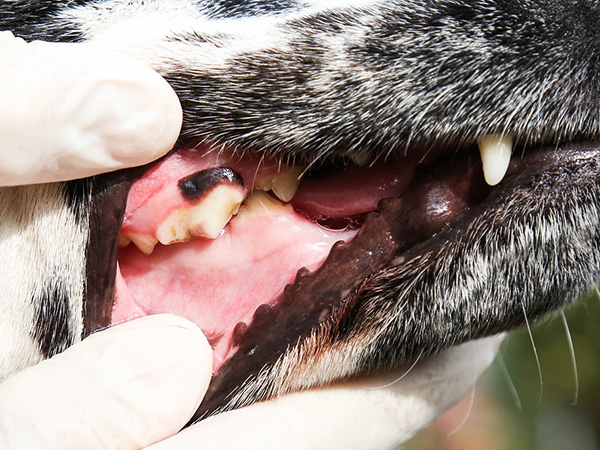What Causes Pale Gums in Dogs: Understanding the Underlying Issues
|
Aug 27, 2025 - By the dedicated team of editors and writers at Newsletter Station.

|
As a responsible pet owner, paying close attention to your furry friend's health and well-being is essential. One aspect of your dog's health that often goes unnoticed until it becomes a significant concern is the color of their gums.
Healthy gums in dogs should be a lovely shade of pink, indicating good blood flow and oxygenation. However, if you notice that your dog's gums appear pale, it may be a sign of an underlying health problem. In this blog, we'll explore the various causes of pale gums in dogs and why addressing them promptly is crucial.
- Anemia
Anemia is one of the most common reasons for pale gums in dogs. It occurs when there is a decrease in the number of red blood cells or a reduction in their ability to carry oxygen effectively. Anemic dogs may have gums that appear pale or even white due to the lack of healthy red blood cells to give them a pink color. Anemia can be caused by various factors, including:
Blood loss from an injury, internal bleeding, or parasites like fleas or ticks.
Nutritional deficiencies, such as a lack of iron or vitamin B12.
Chronic diseases, such as kidney disease or certain types of cancer.
If you suspect your dog is frail, it's essential to consult your veterinarian for a thorough evaluation and appropriate treatment.
- Shock
Pale gums can also be a sign of shock in dogs. Shock occurs when a severe drop in blood pressure and inadequate blood flow to vital organs, including the gums. This can happen due to various reasons, such as trauma, severe infection, or allergic reactions. Shock is a medical emergency, and if you notice your dog has pale gums and other signs like rapid breathing, weak pulse, or collapse, seek immediate veterinary attention.
- Dehydration
Dehydration can also lead to pale gums in dogs. When a dog is dehydrated, its blood volume decreases, which can result in reduced blood flow to the gums. Factors like excessive heat, insufficient water intake, vomiting, diarrhea, or certain medical conditions can cause dehydration. Ensuring your dog has access to clean, fresh water and monitoring its hydration levels is essential to prevent dehydration.
- Circulatory Issues
Issues with the circulatory system, such as heart disease, can affect the color of your dog's gums. When the heart cannot pump blood effectively, it can lead to poor oxygenation of tissues, including the gums. Heart disease is more common in older dogs and certain breeds. Signs of heart disease may include coughing, exercise intolerance, and, of course, pale gums. If you suspect your dog has heart issues, consult your veterinarian for a thorough evaluation and appropriate management.
- Toxic Ingestion
Certain toxins and chemicals can cause pale gums in dogs. These include toxins from plants, chemicals found in household products, and toxic medications for dogs. If you suspect your dog has ingested something harmful, immediately contact your veterinarian or a poison control hotline. You may observe other symptoms besides pale gums, like vomiting, diarrhea, or seizures.
Pale gums in dogs can be a sign of underlying health issues that require prompt attention. Anemia, shock, dehydration, circulatory problems, and toxic ingestion are just a few potential causes. Remember that gum color is just one indicator of your dog's health, and it's important to consider other symptoms and consult your veterinarian for a proper diagnosis and treatment plan.
Regular check-ups and a keen eye for changes in your dog's overall condition are essential to ensure your furry friend stays happy and healthy.
Unlock the Power of Email Marketing
Harness the potential of email marketing with Newsletter Station. Reach your target audience, drive conversions, and achieve your business goals.
|
More Blogs
| Sep 17, 2025 |
What Causes Reverse Sneezing in Dogs: Understanding this Common Canine Phenomenon
|
| Sep 10, 2025 |
Signs of Cancer in Dogs: What Every Pet Owner Should Know
|
| Sep 3, 2025 |
The Types of Tick Illnesses that Your Pet Can Get
|
| Aug 27, 2025 |
What Causes Pale Gums in Dogs: Understanding the Underlying Issues
|
| Aug 20, 2025 |
Common Causes of Stomach Problems in Pets
|
| Aug 13, 2025 |
The Most Common Causes of Bumps in Dogs and Cats
|
| Aug 6, 2025 |
Signs of Dehydration in a Cat or Dog: What Every Pet Owner Should Know
|
| Jul 30, 2025 |
Signs that Your Pet is Drinking Too Much
|
| Jul 23, 2025 |
What to Do If Your Pet Gets Stung
|
| Jul 16, 2025 |
How to Protect Your Dog's Paws: Tips for a Happy and Healthy Furry Friend
|
| Jul 9, 2025 |
Tips for Removing a Tick from Your Pet
|
| Jul 2, 2025 |
How to Know When It Is Too Hot to Walk Your Dog
|
|
|
|